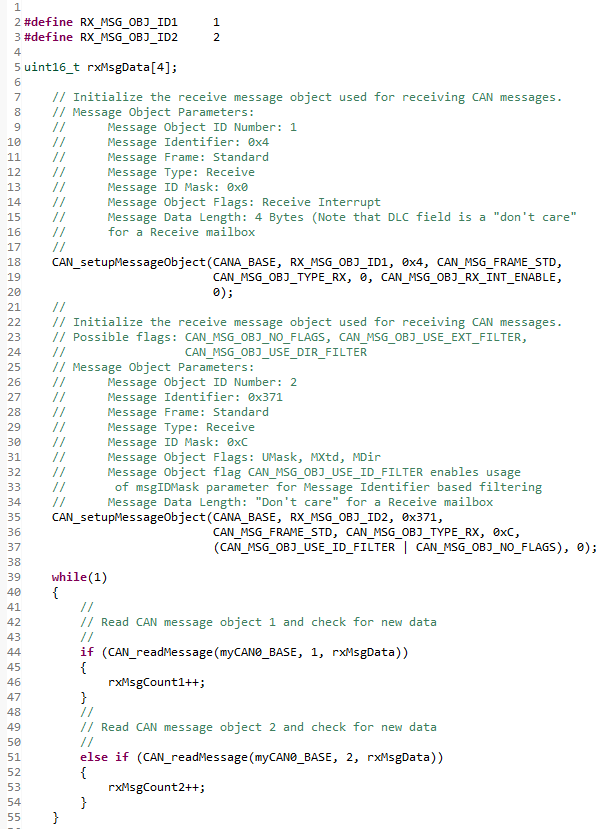SPRAD59 October 2023 TMS320F280039
8.2.1 DCAN Reception
- Configure Receive Message Object: This involves writing the Message IDs (ARBID) and if needed, masking for frames that are to be received.
- For each received frame, the module checks against the Receive Message Objects in ascending order. On the first match, the frame is stored in the corresponding Message Object.
- Either by polling or using interrupts, ascertain the reception of new data. For polling, there is a bit corresponding to each receive message object in the register CAN_NDAT_21. For using Interrupts, the procedure has been outlined in the corresponding section.
- Use one of the IFx Registers to read the data from the received frame.
 Figure 8-1 Reception with DCAN
Figure 8-1 Reception with DCAN